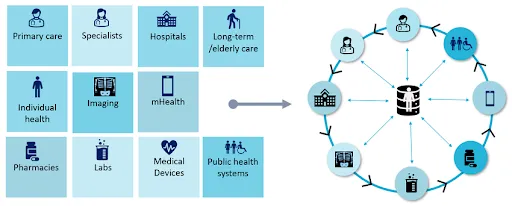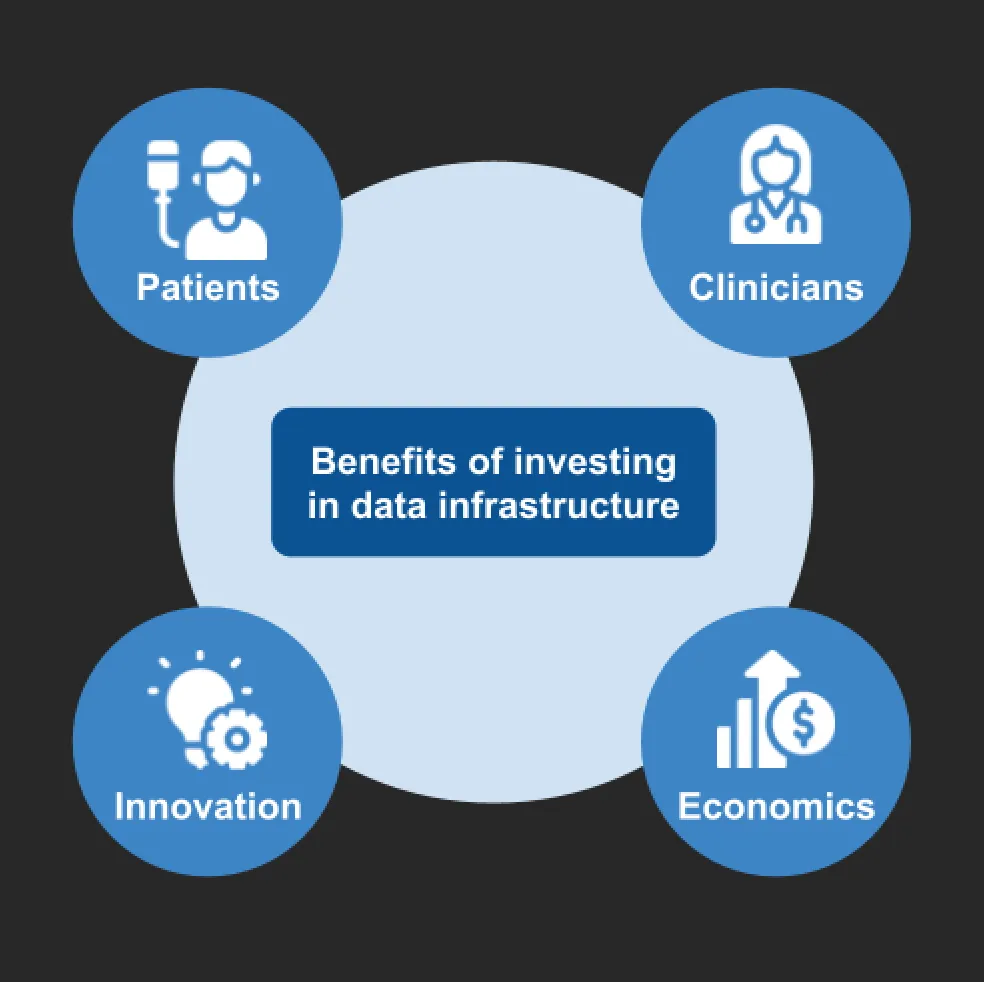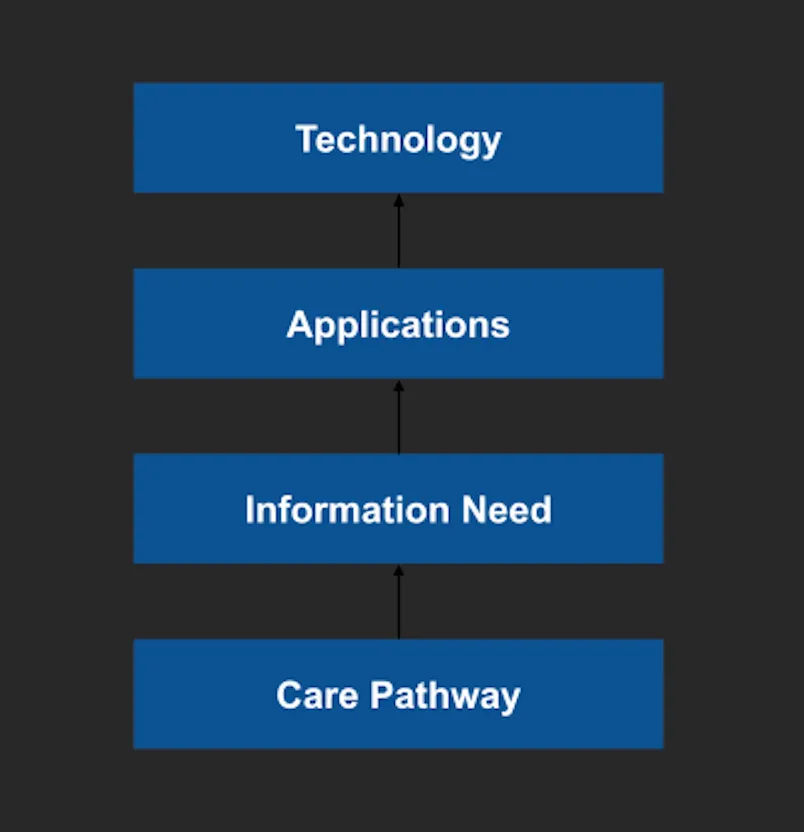In June 2023, the Spanish autonomous region of Catalonia set out to make history by building the world’s first open-source, interoperable unified health record. The goal was to build an end-to-end clinical data platform on openEHR that will bring together the electronic health record for over 8 million residents.
One of the main proponents for this move towards using open platforms in public digital health infrastructure is Jordi Piera Jiménez,the Director of Digital Health Strategy for Catalonia. With a deep understanding of both technology and healthcare data, Jordi emphasizes the need to prevent loss of information in transforming or mapping health data from one system to another.
Catalonia’s and Spain’s history with healthcare
Catalonia, and more broadly Spain, has a long tradition in digital health technologies, Jordi says. Being a wealthy region, Catalonia has had healthcare organizations operating since the 1700s. When digital health technology emerged, these organizations were some of the first to adopt them and promote digitization. This was partly driven by the availability of wealth, and partly due to healthy competition between them. However, this has resulted in the fragmented data landscape whose effects are still felt today.

Spain’s unified primary healthcare system is offering significant advantages in data collection and consolidation. All General Practitioners are part of the public sector and serve as gatekeepers to specialized healthcare resources. This ensures that all primary healthcare interactions are funneled through one centralized EMR. Having been established in 1985, the system does have its challenges. “It’s 40 years of patching.” is how Jordi puts it.
In contrast, hospital care in Catalonia presents a fragmented data landscape. There are 29 different EMR systems in use, some of them products by European vendors, and others custom-built systems reflecting a tradition of in house development.
A federated healthcare technology model for Catalonia has been in the works since the 2000s. This is supported by a centralized data system or the longitudinal health record called the Shared Electronic Health Record of Catalonia built in 2007. This was scaled to the national level in 2011. This centralized health record is accessed by several modules such as a patient portal and a prescription management system.
In recent years, Jordi has been building on the idea of the open platform as the next generation of healthcare technology in Spain. That has driven the current digital health strategy that is centered around openEHR.
Finding the right social incentives is key
A big part of making the open platform vision a reality was to identify the right incentives to mitigate existing challenges. Some of it was from the industry perspective—moving from legacy systems is hard work and there’s always resistance to changing the status quo. Jordi also describes the challenges that existed from the perspective of politicians and policymakers—the prioritizing of immediate results over the long-term gains achieved through infrastructural change.
In mitigating these challenges, Jordi describes that identifying the right incentives was key. The identified benefits were fourfold, for patients, clinicians, economics, and innovation.
- Patients: The existing healthcare system relies heavily on referrals, shifting responsibility from one clinician to the next. There’s a chance for patient information, and the patient themselves to be lost in these transitions.
- Clinicians: For clinicians, it is essential to have complete patient information in order to make the right clinical decisions. Currently, this information has to flow from many different systems and transitions and mappings are inherently lossy in nature.
- Economics: Investments made in the healthcare system are going towards systems that are becoming obsolete and silo both information and business logic.
- Innovation: It is nearly impossible to achieve innovation at scale in a fragmented data ecosystem. Innovation will remain local and repeated investments will be necessary to achieve the same results across the country.

Additionally, Jordi emphasizes the importance of ensuring both short and long term gains. Incorporating quick wins or “shiny things” into the roadmap while changing the foundations of the healthcare system was essential to receiving buy-in from policymakers and politicians.
Driving real change from the public sector
The first step towards realizing the open platform vision was to procure the Clinical Data Repository(CDR). Then, migrating the Shared Electronic Health Record of Catalonia was critical to ensure continuity of care.
“We’re starting to build at the same time”, says Jordi, “Every other new transactional system we are building is CDR-native.” Some of these have been quick wins, systems for immunizations, allergies and patient reported outcomes have been built. Other important ongoing initiatives are a shared care plan and representing chronicity of patient conditions.
Providing API interfacing and documentation to application developers, and enabling a marketplace is an important goal. This tests the capabilities of the CDR to “truly become a transactional system and not […] a passive repository that pulls and throws information,” Jordi says. This opening up would allow for competition and scaling innovation. It also lets health data be monetized and opens up the possibility of applications being reusable in Europe or globally.
“They tell you it is not possible to drive innovation from the public sector, well, it is.” says Jordi, and we think that’s a great summary of how Catalonia’s ambitious steps are changing the global healthcare landscape. The purchasing power of the government of Spain has driven investments into learning and development adherent to open source standards such as openEHR.
A new model for healthcare applications
Currently, technology requirements in healthcare are often identified and addressed in the application layer. This limits possibilities as developers and clinicians are often constrained by applications currently available in the market. Jordi quotes a colleague’s proposal of a 4 level model to identify where value lies.
“What we should be thinking is, which is the care pathway? Which is the use case we want to solve?” Then, identifying the stakeholders associated with this care pathway can help list all the information or data requirements associated with it. Only then should the application and technology to be used be narrowed down or finalized. In this way we ensure that we are not limited by what is currently established or known, and instead take a design thinking approach that allows for rethinking medical workflows.

Jordi takes the example of a decision point that occurs after an elderly patient undergoes a hip surgery. The patient can either be sent home with an early discharge program or to a Convalescence Unit. In the former, the patient is expected to recover in 6 weeks with a higher chance of complete recovery, as opposed to 9 weeks and increased risks of sub-par recovery and cognitive decline. A case manager making that decision requires a lot of information currently residing in various systems. And so, identifying the information that is required in this use case, and then developing applications around it would drive much more value for the patient and the healthcare system as a whole.
Conclusion
Catalonia’s large-scale implementation of open platform healthcare based on openEHR that would support about 8 million people is a transformative event in global healthcare technology. Beyond technological innovation, this endeavor rewrites many of the established and accepted practices in healthcare today.
Many existing systems are focused on near-term gains or are effectively broken roads running electric cars - investing in reorganizing the foundation of healthcare data is a rare occurrence. Jordi is also rethinking the design of healthcare technology from the ground up - starting at care pathways instead of at applications or data points.
We at Medblocks are excited to be collaborating with Catalan Health Services and vitagroup on this program, and to participate in building healthcare systems of the future. Watch the complete interview that our founder Dr. Sidharth Ramesh did with Jordi Piera Jiménez over at our youtube channel.
Are you interested in building healthcare technology that leverages vendor-neutral healthcare standards? Reach out to us at contact@medblocks.com to get started.
